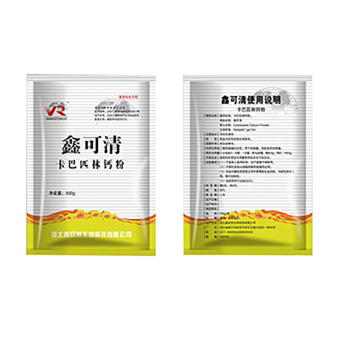- Afrikaans
- Albanian
- Amharic
- Arabic
- Armenian
- Azerbaijani
- Basque
- Belarusian
- Bengali
- Bosnian
- Bulgarian
- Catalan
- Cebuano
- Corsican
- Croatian
- Czech
- Danish
- Dutch
- English
- Esperanto
- Estonian
- Finnish
- French
- Frisian
- Galician
- Georgian
- German
- Greek
- Gujarati
- Haitian Creole
- hausa
- hawaiian
- Hebrew
- Hindi
- Miao
- Hungarian
- Icelandic
- igbo
- Indonesian
- irish
- Italian
- Japanese
- Javanese
- Kannada
- kazakh
- Khmer
- Rwandese
- Korean
- Kurdish
- Kyrgyz
- Lao
- Latin
- Latvian
- Lithuanian
- Luxembourgish
- Macedonian
- Malgashi
- Malay
- Malayalam
- Maltese
- Maori
- Marathi
- Mongolian
- Myanmar
- Nepali
- Norwegian
- Norwegian
- Occitan
- Pashto
- Persian
- Polish
- Portuguese
- Punjabi
- Romanian
- Russian
- Samoan
- Scottish Gaelic
- Serbian
- Sesotho
- Shona
- Sindhi
- Sinhala
- Slovak
- Slovenian
- Somali
- Spanish
- Sundanese
- Swahili
- Swedish
- Tagalog
- Tajik
- Tamil
- Tatar
- Telugu
- Thai
- Turkish
- Turkmen
- Ukrainian
- Urdu
- Uighur
- Uzbek
- Vietnamese
- Welsh
- Bantu
- Yiddish
- Yoruba
- Zulu
Dec . 23, 2024 20:19 Back to list
Enrofloxacin Injection Use and Benefits for Goat Health and Treatment
Enrofloxacin Injection for Goats Benefits, Usage, and Considerations
Enrofloxacin, a fluoroquinolone antibiotic, has emerged as an essential medication in livestock veterinary medicine, particularly for goats. Its broad-spectrum activity against both Gram-positive and Gram-negative bacteria makes it invaluable in treating a variety of infections. In this article, we will explore the benefits of enrofloxacin injection for goats, its appropriate usage, and important considerations for veterinarians and goat owners alike.
Benefits of Enrofloxacin
The primary benefit of enrofloxacin is its efficacy in treating bacterial infections in goats. Common conditions treated with this antibiotic include respiratory infections, mastitis, and other systemic infections that could threaten the health of goats. Enrofloxacin is known for its rapid absorption and distribution in tissues, allowing for quick alleviation of clinical signs. In cases where goats experience severe infections or when there is a risk of systemic illness, enrofloxacin can be a life-saving intervention.
Another significant advantage of enrofloxacin is its ability to administer through injection, which is particularly beneficial in situations where oral medication may not be effectively ingested, such as in severely ill animals or those experiencing gastrointestinal issues. The injectable form provides a reliable alternative, ensuring that the intended dose reaches the bloodstream promptly, thus enhancing the speed of recovery.
Appropriate Usage
When using enrofloxacin in goats, veterinarians should adhere to specific dosing guidelines. The typical dosage is often around 2.5 mg to 5 mg per kg of body weight, administered once daily. However, the exact dosage may vary based on the particular infection being treated and the goat’s overall health status. It is critical that enrofloxacin be used judiciously to prevent the development of antibiotic resistance, a growing concern within veterinary medicine.
enrofloxacin injection for goats

Treatment duration usually ranges from a few days to two weeks, depending on the severity of the infection and the goat's response to treatment. Vigilant monitoring of the goats during this period is essential. If no improvement is observed after a few days of treatment, veterinary assessment may be necessary to reevaluate the diagnosis and consider alternative treatment options.
Considerations and Precautions
While enrofloxacin is a powerful tool in managing bacterial infections in goats, several considerations and precautions must be observed. Firstly, it is crucial to ensure that the medication is prescribed and administered only under the guidance of a licensed veterinarian. Self-medication or improper use of antibiotics can lead to ineffective treatment and the risk of developing antibiotic-resistant bacteria.
Furthermore, enrofloxacin is not appropriate for all situations. For example, its use in pregnant or breeding animals is typically discouraged due to potential effects on fetal development. Veterinarians must weigh the advantages of enrofloxacin treatment against potential risks based on the specific context of the animal, including its age, reproductive status, and existing medical conditions.
Another important consideration involves the withdrawal period. Goats treated with enrofloxacin must adhere to a withdrawal time before their milk or meat can be consumed to ensure that any residual antibiotic levels have cleared from their system. This period can vary based on regulatory guidelines and the specific medication used, but it is a crucial factor for ensuring food safety and compliance with agricultural regulations.
Conclusion
Enrofloxacin injection is a significant asset in the management of infectious diseases in goats. Its effectiveness, rapid action, and ease of administration make it a preferred choice for veterinarians treating various bacterial infections. However, responsible use is paramount to prevent potential complications such as antibiotic resistance. Goat owners are encouraged to work closely with their veterinarians to develop appropriate treatment plans that consider the health and welfare of their animals. By doing so, they can ensure that enrofloxacin and other antibiotics remain effective tools in safeguarding goat health for years to come.
-
Guide to Oxytetracycline Injection
NewsMar.27,2025
-
Guide to Colistin Sulphate
NewsMar.27,2025
-
Gentamicin Sulfate: Uses, Price, And Key Information
NewsMar.27,2025
-
Enrofloxacin Injection: Uses, Price, And Supplier Information
NewsMar.27,2025
-
Dexamethasone Sodium Phosphate Injection: Uses, Price, And Key Information
NewsMar.27,2025
-
Albendazole Tablet: Uses, Dosage, Cost, And Key Information
NewsMar.27,2025













